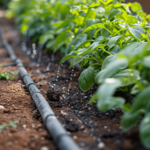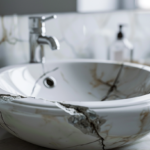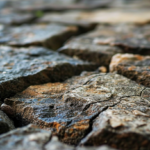In this comprehensive guide, we will explore the step-by-step process of installing a French drain, a proven method for effective water drainage. Whether you are facing water pooling issues in your yard or seeking to prevent basement flooding, this article will equip you with the necessary knowledge and skills to successfully install a French drain system. From assessing the drainage problem to digging the trench and installing the drain, we will walk you through each stage, ensuring a professionally executed solution.
Assessing the Drainage Problem
The assessment of the drainage problem revealed several underlying issues that need to be addressed before proceeding with the installation of a French drain. The first step in assessing the problem is identifying the source of the excess water. This can be caused by poor grading, improper slope, or even a high water table. Once the source is identified, the next step is evaluating the soil condition. Different soil types have varying levels of permeability, which affects the efficiency of the French drain system. Clay soils, for example, have low permeability and may require additional measures such as soil amendment or the use of a sump pump. Sandy soils, on the other hand, have high permeability and may need less intervention. By thoroughly assessing the drainage problem and understanding the soil condition, the installation of a French drain can be tailored to effectively address the underlying issues.
Gathering the Necessary Tools and Materials
To successfully install a French drain, it is important to gather all the required tools and materials, such as shovels, gravel, perforated pipe, and geotextile fabric. Additionally, it is crucial to have the necessary measuring equipment and to follow proper safety precautions. Measuring equipment, such as a tape measure or level, will ensure accurate placement and slope of the drain. Safety precautions should be taken to protect oneself and others during the installation process. This includes wearing appropriate personal protective equipment, such as gloves and safety glasses, and being cautious when working with tools and equipment. It is also important to be aware of any underground utilities or obstacles that may be present in the area where the French drain will be installed. By gathering the necessary tools and materials and taking proper safety precautions, the installation process of a French drain can be completed efficiently and effectively.
Planning and Marking the Drainage Route
Properly considering the surrounding landscape and potential obstacles, one must carefully plan and mark the drainage route before proceeding with the installation of the French drain. Measuring the distance accurately is crucial to ensure the drain effectively redirects water away from the desired area. This can be done using a measuring tape or a measuring wheel, depending on the size of the project. When choosing the right drainage pipe, it is important to consider the material and size that best suits the specific needs of the project. Common options include PVC, corrugated plastic, or perforated pipes. PVC pipes are durable and resistant to corrosion, while corrugated plastic pipes are more flexible and easier to work with. Perforated pipes are designed to allow water to enter the drain easily. By carefully planning and selecting the appropriate drainage pipe, the French drain installation process can be executed efficiently and effectively.
Digging the Trench for the French Drain
Carefully excavating and leveling the ground, while also ensuring proper slope and grade, is essential when digging the trench for the French drain. The first step is to measure the depth of the trench, which is typically between 12 and 24 inches. This depth allows for adequate water collection and drainage. Once the trench depth is determined, it is important to backfill the trench properly. This involves placing a layer of gravel or crushed stone at the bottom of the trench to promote water flow. The backfilling process continues by adding a perforated drain pipe on top of the gravel layer and covering it with more gravel or crushed stone. This helps prevent soil from clogging the drain pipe while allowing water to filter through. Finally, the trench is backfilled with soil, ensuring proper compaction to prevent settling. By following these steps, the trench for the French drain can be successfully excavated and prepared for effective drainage.
Installing the French Drain System
The gravel layer and drain pipe must be securely connected and then covered with additional gravel or crushed stone to effectively install the French drain system. When installing the drain pipe, it is important to ensure a proper slope to allow for proper drainage. The drain pipe should be placed in the trench with the perforated side facing downwards. The ends of the drain pipe should be connected using fittings to create a continuous system. Once the drain pipe is securely in place, it should be covered with a layer of gravel or crushed stone. This layer acts as a filter to prevent debris from clogging the drain pipe and allows for water to flow freely into the pipe. It is essential to cover the drain with a sufficient amount of gravel to ensure proper drainage and prevent any blockages. By following these steps, the French drain system can effectively manage excess water and prevent water damage.




